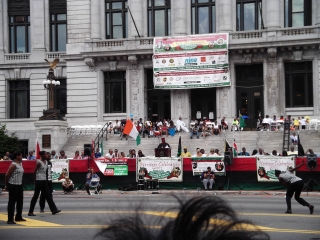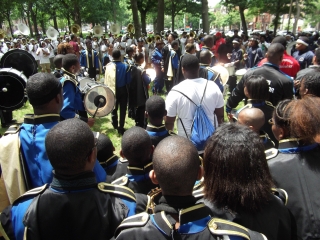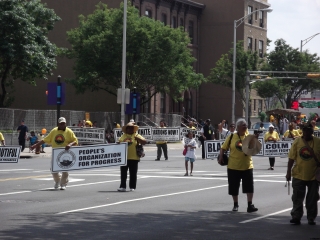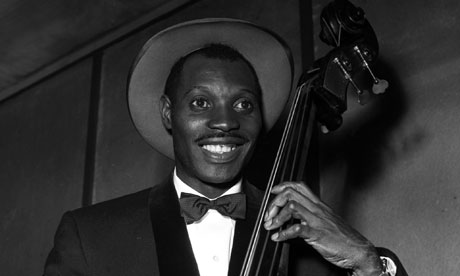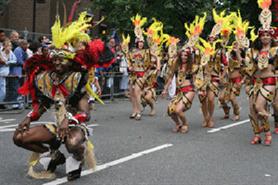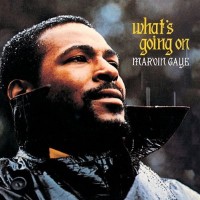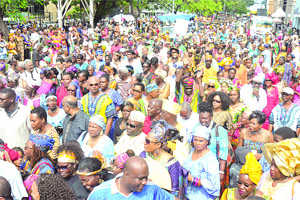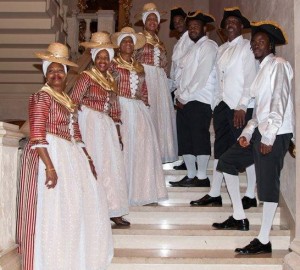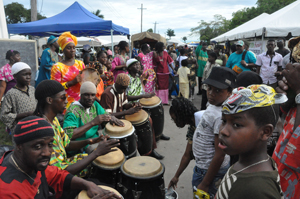Jamaican ska music legend Eric “Monty” Morris will return to the Southland on August 27th for what will be his fifth ever show in the City of Angeles. Monty will be honored in a very special Tribute To A Living Legend showcase inside the popular new reggae night spot, The Joint.
Fresh from his debut European tour and in support of his first full-length album entitled The Living Legends Collection, Monty will be backed by an all-star cast of L.A. based musicians for this one night only. Also on the bill will be L.A.’s reggae rising stars Penny Reel (named after Monty’s hit song), popular San Diego ska outfit The Amalgamated, deejay Ras Sal and emcee Junor Francis (of KXLU radio). Monty’s fans can expect a high energy set that will include his hits “Humpty Dumpty,” “Strongman Sampson,” “Penny Reel” and “Oil In My Lamp.” http://www.myspace.com/officialericmontymorris
Eric “Monty” Morris
Monty Morris, who has outlived many of his contemporaries, is recognized and considered one of the founding fathers of ska music. As early as 1961, prior to Jamaica gaining its independence from Great Britain, he had several hit songs such as “I’ve Tried,” “Me & My Forty Five,” “Say That You Love Me,” “Search the World” and the chart topping, “Humpty Dumpty” for singer/producer Prince Buster. Also in 1961, he recorded “To Be or Not to Be” for producer Coxsone Dodd.
That same year Monty teamed up with Jamaican expatriate who now resides in Canada, Roy Panton. The duo released several unique and brilliant cuts “In & Out the Window,” Oh Little Honey” and Sweetie Pie,” all of which made cash registers ring for producer Duke Reid. Along with giants of the ska epoch, Alton Ellis, Stranger Cole and Ken Boothe, Morris grew up in the Trench Town area of Kingston, Jamaica. His big opportunity came when he competed in the ever so popular Vere Johns’ Opportunity Hour.

Monty Morris
From there Monty went on to make hit songs for every Kingston producer of the day. With his popularity at an all time high, having placed multiple tunes such as “Strongman Sampson,” “Humpty Dumpty,” “Drop Your Sword,” “Penny Reel” and “Oil in My Lamp,” on the top ten charts on both Jamaican radio stations, JBC and RJR, Monty could do no wrong. He was commissioned to perform in the United States at the highly prestigious 1964 New York World’s Fair.
The fabulous cast of Jamaican musicians that rocked the foundation of New York City included Millie Small, Jimmy Cliff, and Byron Lee & the Dragonaires. The Fair’s theme was “Peace through Understanding,” dedicated to “Man’s Achievement on a Shrinking Globe in an Expanding Universe.”
By 1966, Jamaica’s first indigenous music had evolved into the short lived but glorious rocksteady and Monty was back in the spotlight with his last major contribution to the Jamaican music charts “Say What You’re Saying” for producer/singer Clancy Eccles in 1968.
The following year, Monty migrated to the United States where he has been residing ever since. To date, his songs have been included in numerous ska, rocksteady and reggae compilations. Much to his delight, in the 2003 Jim Jarmusch directed film “Coffee and Cigarettes,” used his song “Enna Bella” as one of soundtrack numbers.
In March of 2011 Monty released his first full-length album “The Living Legends Collection – Eric Monty Morris (Buckley Records).” http://www.facebook.com/ericmontymorris / http://www.myspace.com/officialericmontymorris
For original article: http://www.sflcn.com/story.php?id=10654
